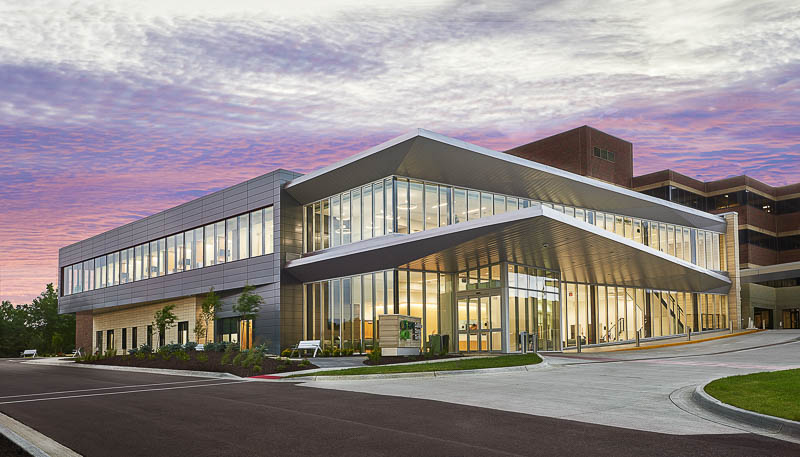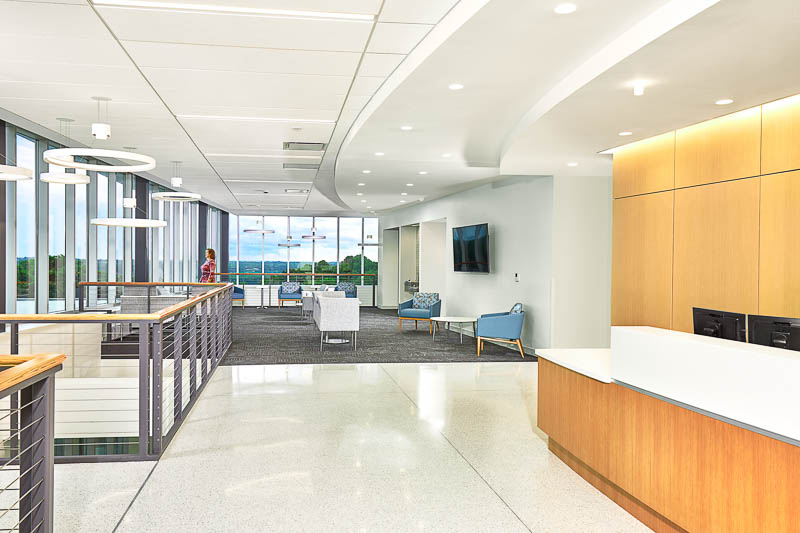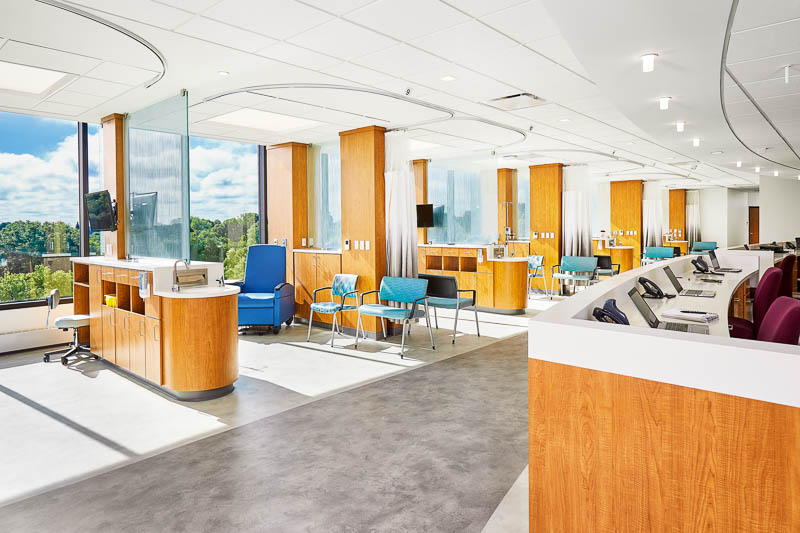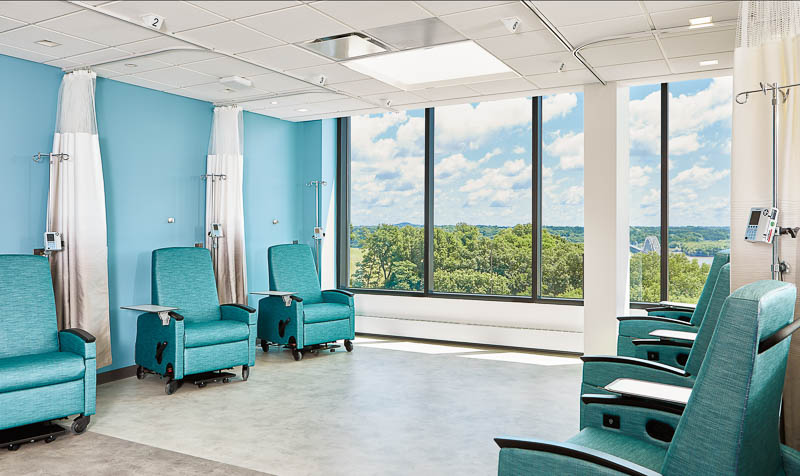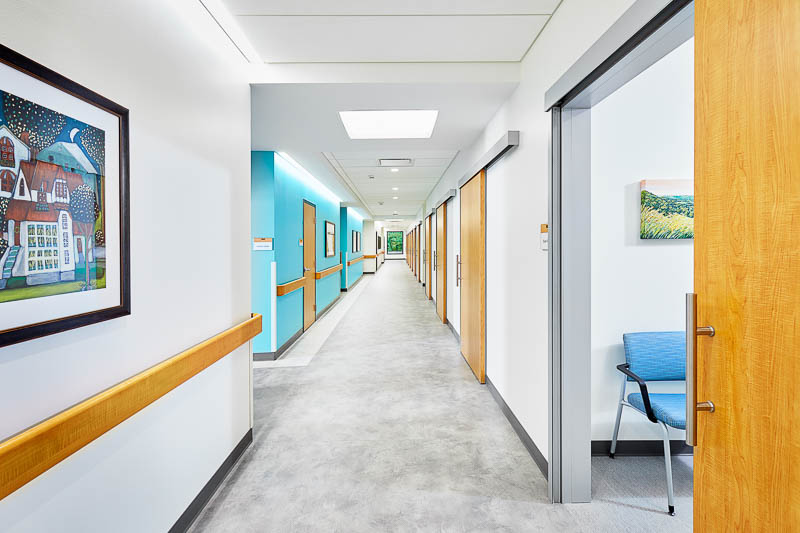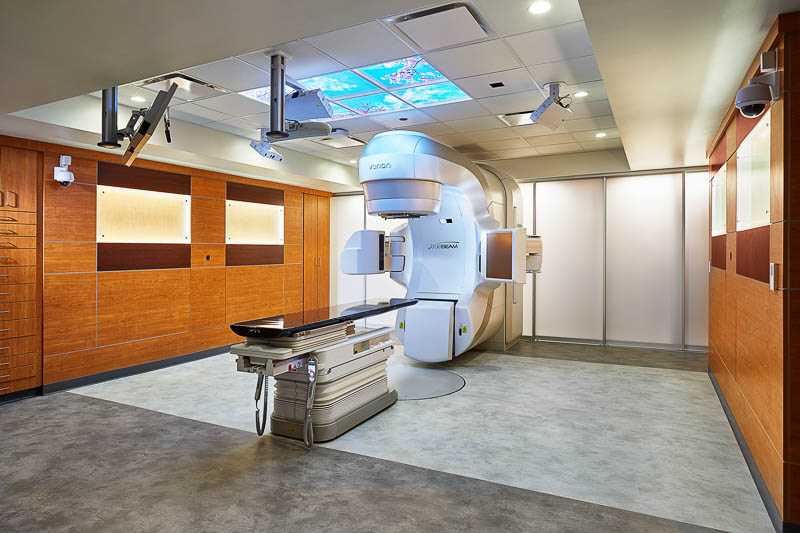
MercyOne Dubuque Cancer Center
Dubuque, IAThe mechanical heating, ventilation, and air conditioning (HVAC) system include two 65-ton gas-fired/DX cooling rooftop units that serve the two floors of the building, respectively. A variable air volume (VAV) system with heated water reheat is used in conjunction with the above to provide proper thermal zoning for greater control to meet the needs of occupant comfort. The system utilizes a sophisticated multi-zone VAV control sequence to optimize unit performance to increase energy efficiency that elevates a system that is typically considered a “traditional” HVAC system.
The front entrance of the cancer center is a focal point of the aesthetic of the building’s contemporary design. With that, there was not an ability to routeductwork in the ceiling, so MODUS designed a discreet underground duct system with floor grilles to achieve the desired vision of the grand entrance.
The boiler plant consists of two ultra-high efficiency condensing boilers that feed the buildings zoned reheat boxes along with radiant floor zones near the front entrance. A third ultra-high efficiency condensing boilers feed a large snowmelt area at the front entrance as well as the maintenance and employee entrance area to maintain patient and staff safety during the harsh Iowa winters.
The cancer center is also home to an advanced, complete compounding pharmacy that meets the stringent requirements of the USP 800 compounding pharmacy guidelines. A third gas-fired/DX rooftop unit serves venturi style VAV boxes to regulate the tight range of the pressure requirements for these spaces and features wall-mounted touchscreens to alert staff of the conditions of each room.
For the electrical distribution system, an exterior switchgear was installed and fed from the campus’s existing 13.8 KV main distribution panel located in the boiler plant. This new switchgear serves both the cancer center and the existing PAP building. The electrical system was designed with onboard metering equipment to monitor electrical usage to assist the hospital staff in lease agreements with the cancer center tenant.
The lighting controls system was designed for BacNet capability to allow the owner of the building to adjust scheduling, monitor lighting usage, and control interior and exterior lights on a room-by-room basis either remotely or while on campus. The system was designed for future expansion to the existing hospital.
Project
MercyOne Dubuque Cancer Center
Location
Dubuque, IA
Construction Cost
$17 Million
Architect
OPN Architects
Total Sq. Ft.
38,727 SF
Completion Date
Summer 2020



